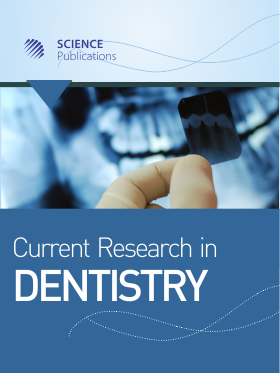Monomers Release from Dental Composites: Effect of Immersion Media and Photoactivation Light Source
- 1 University of São Paulo, Brazil
- 2 Academia de Ciencias Médicas de Cataluña y Baleares, Spain
- 3 University of São Paulo, Brazil
Abstract
The present study aimed to evaluate qualitatively and quantitatively the products released by composites with different light sources when immersed in distilled water or artificial saliva. Thirty-six samples were obtained from the composites using a silicone matrix. Specimens were divided into 12 groups according to: Composite (Charisma®, FiltekTMSilorane or GC Kalore®), device used for the materials photoactivation (halogen light or LED) and immersion medium (distilled water orartificialsaliva). Measurements were obtained using a UV-visible spectrophotometer. The FiltekTMSilorane resin showed the highest absorbance and thus the highest concentration of monomers released at the maximum time assessed when immersed in artificial saliva. No significant difference was observed in the amount of monomers release when using LED (0.54 mg mL-1) and halogen light (0.53 mg mL-1). Release of monomers from composites can occur and is dependent on the composite formulation, immersion medium or the photoactivation unit.
DOI: https://doi.org/10.3844/crdsp.2014.1.5

- 3,629 Views
- 2,152 Downloads
- 0 Citations
Download
Keywords
- Nanoparticle Resin
- Residual Monomer
- Halogen Light
- LED
